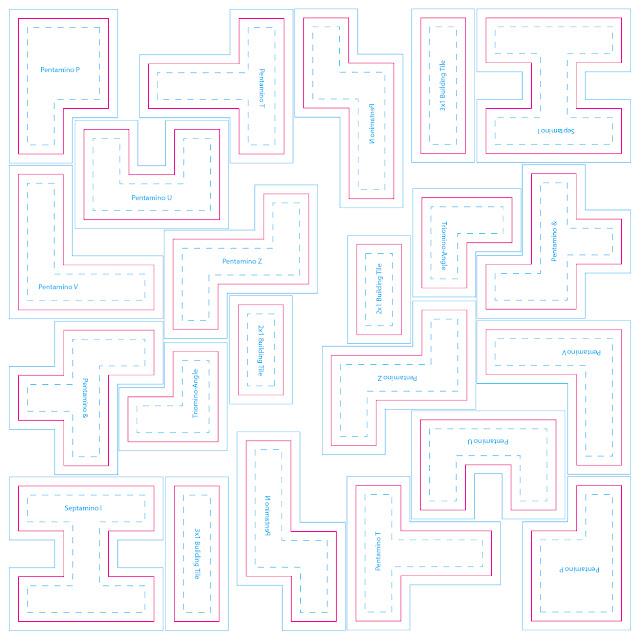Vases, Crates, Barrels and Sacks: Breaking Down the Yspahan Board into a Card Deck
| Value of Suit and Color permutation, divided by number of spaces. |
In the graphic above, I divided the total value of all markets in a permutation by the number of markets in that permutation. For example, two yellow vase markets are worth 6 points in total. Thus, each individual market is worth 3. In some cases, this resulted in awkward fractions, noted in red. I rounded these to whole integers, so that some markets within a single permutation would be worth more than others. That resulted in the values noted below.
| Value of Suit and Color permutation, divided by number of spaces, rounded. |
I was curious about the individual values of a suit as a whole, regardless of color. I divided the total values of each suit by the number of markets in that suit and came up the following results. I distributed point values as evenly as possible, with high values favoring the more common colors. Interesting to note: Sack and Barrel are both worth 21 points in total, their main difference being rarity.
| Value of Suit, divided by its number of spaces, rounded. |
What if we broke down the values across colors regardless of their suit? For the purposes of this breakdown, I considered orange to be pink. I assume the orange vase permutation is a unique color to highlight its high value, but for our purposes it follows the pattern of rarity established by all the other pink markets. (In other words, pink is usually the most common color in a suit.) I distributed those points as evenly as possible, with each suit getting at least one high value market and the more common suit getting first dibs.
| Value of Color, divided by its number of spaces, rounded. |
Sometimes it's useful to reverse-engineer a successful design. Exploring its various permutations can help you discover how another designer solved certain problems. It can also lead you to interesting ideas of your own. In my case, this gives me an idea for a deck of cards.
This is a spreadsheet for a deck of 54 cards. Each row represents a single card and its individual point value. Each card has a suit and a color. When played as a set of matching suits and/or colors, their value increases as noted. I also added six wild cards to round out the deck. Try playing Go Fish with this deck! When the deck runs out, the player with the most points wins? You could also use points as a resource towards a more strategic Euro victory condition, like Ticket to Ride. Maybe a memory game?
Anyhoo... This is what I do for fun sometimes. Have you ever reverse-engineered a game like this, or am I just weird?


Not Go Fish, I think, but Rummy could be a good choice.
ReplyDelete